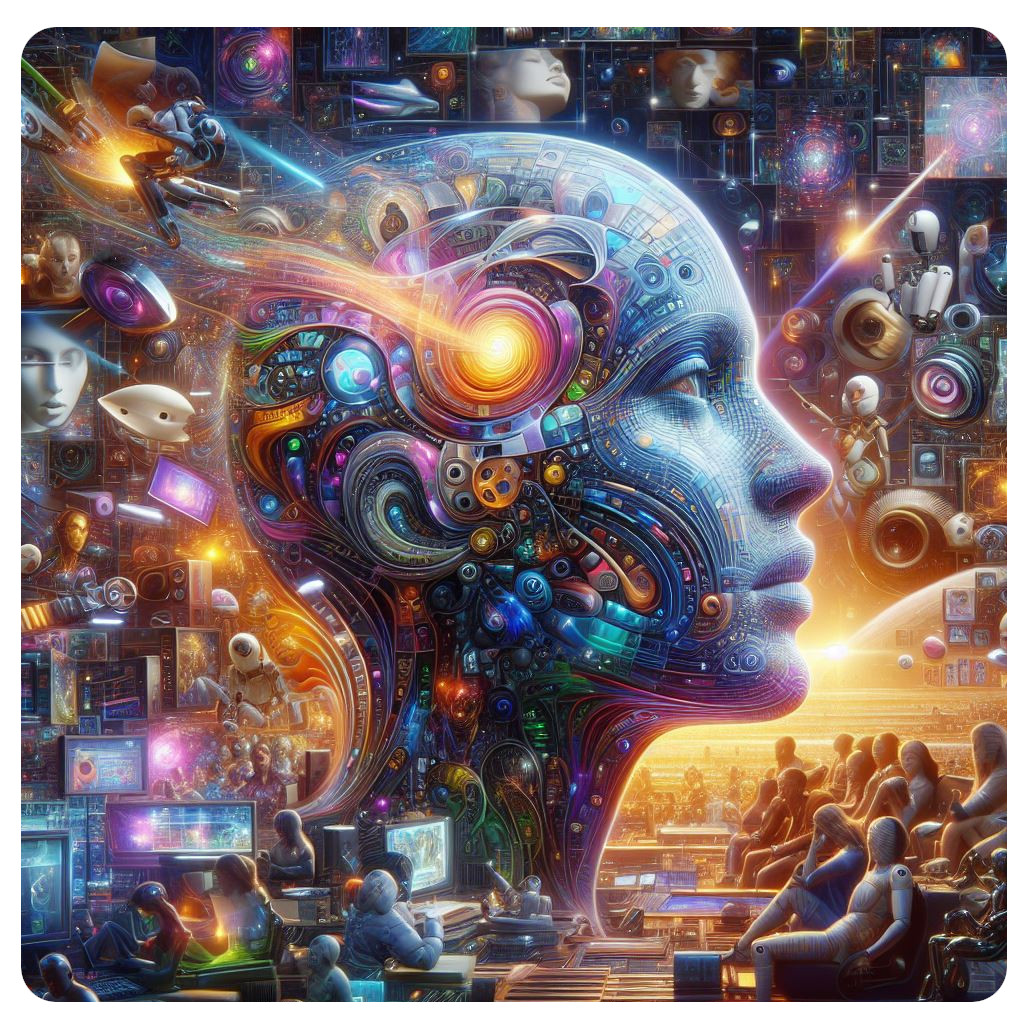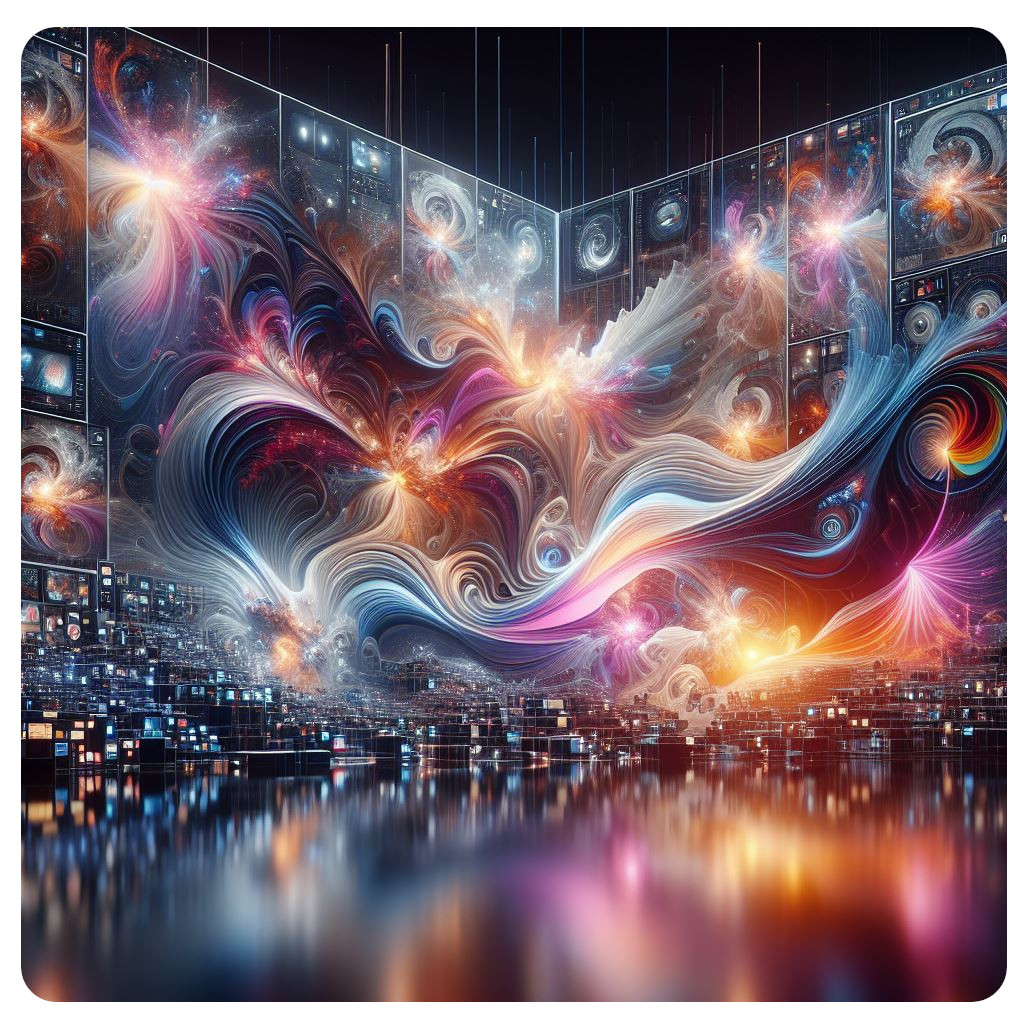Generative AI Is Unleashing Creativity
 image Dall-E 3 author
image Dall-E 3 author
The Evolution Awakens
In a galaxy not so far away, an extraordinary revolution is unfolding. Over the past six months, the realm of Generative AI has undergone a metamorphosis that has left the creative world in awe. This transformative force, once a mere spark in the realm of scientific exploration, has burst into a supernova of innovation, igniting the imaginations of developers, artists, filmmakers, and content creators alike.
At the heart of this cosmic shift lies AI's newfound ability to see, hear, and generate human-like text with unprecedented fluency. It has got a name - Multimodal. Like a linguistic virtuoso, AI now weaves intricate tapestries of words, crafting narratives that resonate with the depth and complexity of the human experience. This linguistic prowess has opened up vast uncharted territories for storytellers, enabling them to explore new realms of creative expression.
The Pixel Paradigm Shift
But the revolution extends far beyond the written word. The artistic canvas itself has been forever altered by AI's ability to conjure stunning visual masterpieces. With each passing day, the fidelity and ingenuity of AI-generated images continue to soar, transcending the boundaries of what was once deemed possible.
Imagine a world where a simple prompt can give birth to entire universes, where the brushstrokes of digital artistry can breathe life into scenes that defy the constraints of reality. This unprecedented creative freedom has empowered filmmakers, artists, and designers to push the boundaries of their craft, unleashing a torrent of artistic expression that was once confined to the realms of imagination.
The Minds of Tomorrow
Yet, the true essence of this revolution lies not merely in its ability to generate text or images but in its capacity for complex problem-solving. Like a digital Prometheus, AI has ignited a spark of ingenuity that promises to reshape the very foundations of content creation.
From script development and storyboarding to visual effects and post-production, AI's analytical prowess is revolutionizing every aspect of the filmmaking process. By harnessing the power of machine learning algorithms, creatives can now explore infinite possibilities, streamline workflows, and unlock unprecedented levels of efficiency and creativity.
The Storytellers' Renaissance
Breathing Life into Stories
In the realm of filmmaking, storytelling has long been the beating heart that captivates audiences and transcends cultural boundaries. As AI's linguistic mastery continues to evolve, it has become an invaluable collaborator for writers and creators, empowering them to craft narratives that resonate with audiences on a profound level.
From generating compelling character arcs and intricate plot lines to crafting evocative dialogue and vivid descriptions, AI has become a wellspring of narrative inspiration. Its ability to analyze vast troves of data and extract insights has opened new avenues for storytellers to explore the depths of human emotion, cultural nuances, and societal themes, ensuring that their stories resonate with authenticity and resonance.
Unleashing Visual Magic
The impact of AI extends far beyond the written word, encompassing the very canvas upon which stories are brought to life. The advent of AI-generated imagery has ushered in a new era of visual storytelling, where the boundaries between reality and imagination blur.
Concept artists and designers can now collaborate with AI to conjure entire worlds, crafting intricate environments, characters, and creatures that defy the constraints of traditional mediums. This symbiotic partnership between human ingenuity and machine intelligence has birthed a renaissance in visual storytelling, allowing filmmakers to transport audiences to realms that were once the exclusive domain of dreams.
Streamlining the Creative Process
Beyond its creative contributions, AI's analytical prowess has revolutionized the very fabric of filmmaking workflows. From script analysis and storyboarding to visual effects and post-production, AI has become an indispensable ally, streamlining processes and optimizing efficiency.
Script analysis tools powered by AI can dissect narratives, identifying plot holes, character inconsistencies, and even potential areas for improvement, empowering writers to refine their craft with surgical precision. In the realm of visual effects, AI-driven algorithms can automate tedious tasks, freeing artists to focus on the boundless realms of creativity.
Moreover, AI's ability to analyze vast troves of data has opened new avenues for audience insights, enabling filmmakers to craft stories that resonate with global audiences. By understanding cultural nuances, demographic preferences, and emerging trends, content creators can tailor their narratives to captivate and inspire audiences worldwide.
The Ethical Frontier
Navigating the Ethical Landscape
As with any revolutionary technology, the rise of Generative AI in the creative industries has sparked debates and raised ethical concerns. Issues surrounding intellectual property, biases in AI training data, and the potential impact on human employment have rightfully garnered attention and scrutiny.
It is imperative that as we embrace the creative possibilities of AI, we simultaneously navigate these ethical considerations with wisdom and foresight. Open dialogue, responsible governance, and a commitment to ethical principles must guide our journey, ensuring that this technological revolution uplifts and empowers rather than diminishes or exploits.
Striking a Harmonious Balance
Amidst these concerns, however, lies an opportunity to forge a harmonious balance between human ingenuity and machine intelligence. AI should not be viewed as a replacement for human creativity but rather as a powerful tool that augments and amplifies our artistic expression.
By embracing a collaborative approach, where AI serves as a catalyst for human creativity rather than a substitute, we can unlock unprecedented realms of artistic exploration. The true power of this revolution lies in the synergy between human imagination and machine intelligence, a symbiotic partnership that transcends the limitations of either realm alone.
The Future Awaits
A New Renaissance Dawns
As we stand on the precipice of this generative revolution, the future beckons with infinite possibilities. The creative industries, once bound by the constraints of traditional mediums and workflows, now stand poised to usher in a new renaissance of artistic expression.
Imagine a world where the boundaries between reality and imagination blur, where stories transcend the confines of language and cultural barriers, and where the canvas of creation is as vast as the human imagination itself. This is the promise of Generative AI, a transformative force that will shape the very fabric of how we create, collaborate, and consume content.
Embracing the Journey
Yet, as we embark on this extraordinary journey, it is crucial to remember that true creativity stems from the human spirit. AI may be a powerful tool, but our ingenuity, passion, and unwavering commitment to storytelling will ultimately shape the narratives that captivate generations to come.
So, let us embrace this generative revolution not with trepidation but with open arms and minds. Let us harness the power of AI to augment our creative endeavors, push the boundaries of what is possible, and craft stories that inspire, uplift, and unite us all. This technological progress is echoed in the development of AI models. We have seen a tremendous leap from early DALL-E models which rendered an impressionistic dream-like vision only particularly useful for memes, through to the latest models which can create photorealistic imagery - AI Art now resembles real art. Sora, the all-captivating video model from Open AI that produces video clips any Hollywood producer/director will certainly be proud of. Then there are the multimodal models from Open AI (GPT-4o) and Google(Gemini) respectively with a glimpse of things to come. We wait with bated breath.
The past six months have been a period of significant progress for Generative AI. The advancements in textual generation, visual creativity, and complex problem-solving have not only improved the capabilities of AI but also expanded its role in the creative process. As AI continues to evolve, it promises to transform content creation in ways that will enrich the human experience and broaden the horizons of what is creatively possible.
Ultimately, it is not the technology that defines us, but the stories we choose to tell and the dreams we dare to bring to life.

image Dall-E 3 author
Watch The Video